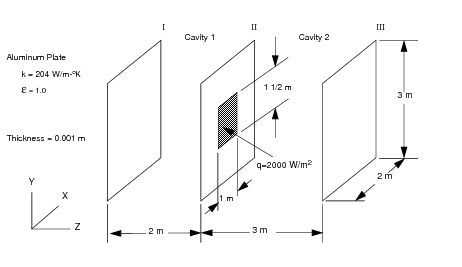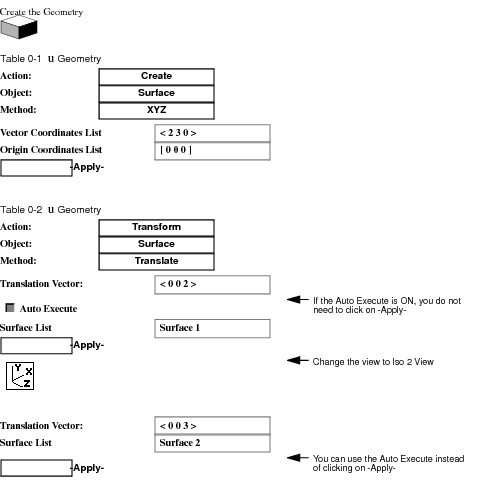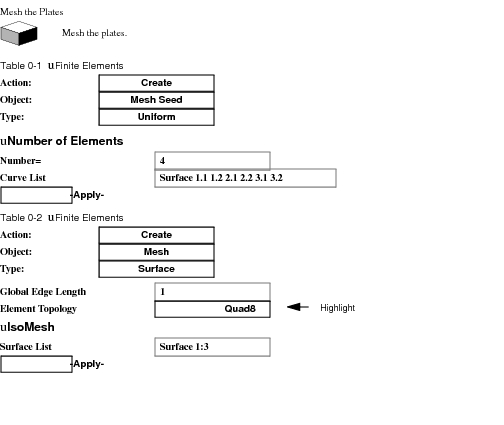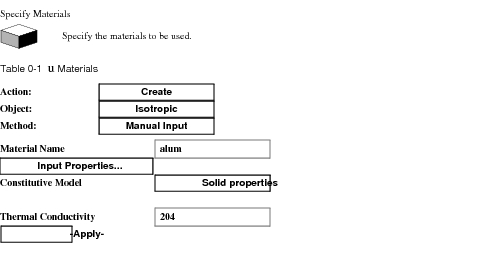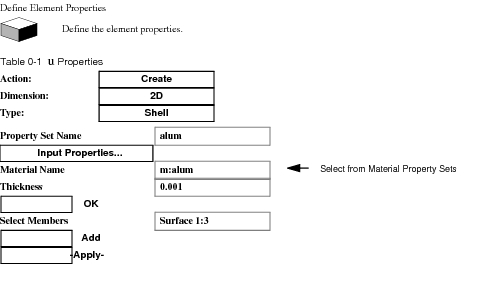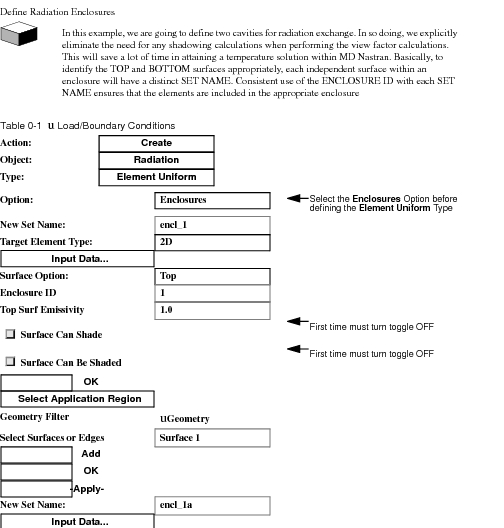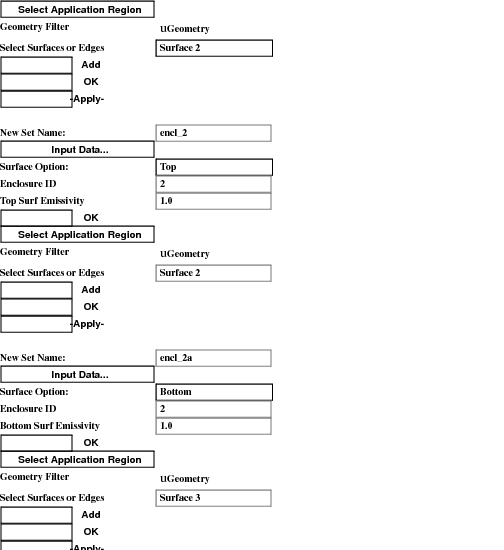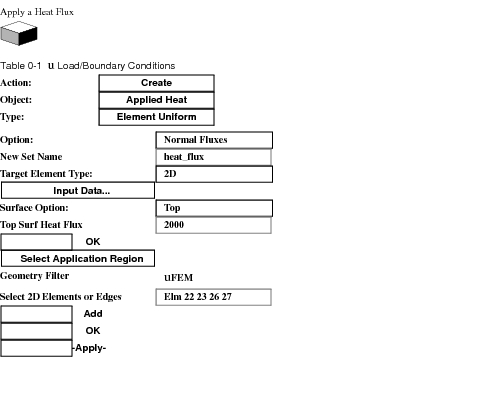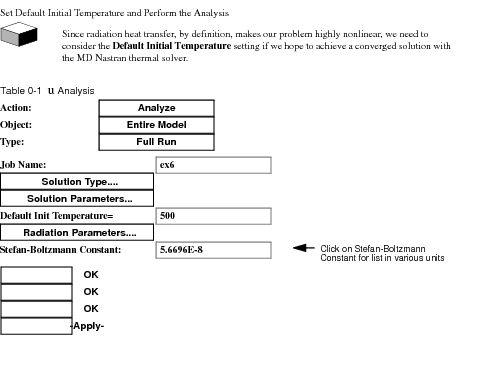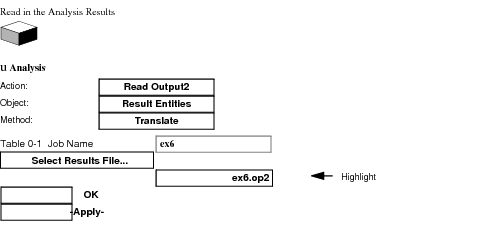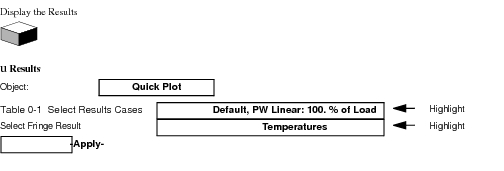XXXXXXXXXXXXXXXXXXXXXXXXXXXXXXXXXXXXXXXXXXXXXXXXXXXXXXXXXXXXXXXXXXXXXXXXXXXXXXXXXXXXXXXXXXXXXXXXXXXXXXXXXXXXXXXXXXXXXXXXXXXXXXXXXXXXXXXXXXXXXXXXXXXXXXXX''"> 7.7 Example 6 - Radiation Enclosures
Problem Description
Three plates are in radiative equilibrium with a zero-degree ambient environment. Each plate measures 2 m by 3 m, and are arranged as shown in the figure above. The center plate (II) has a heat flux applied to it with a magnitude of 2000 W/m2 in the central region, as illustrated.
The emissivity of all surfaces is chosen as 1.0, representing perfect blackbodies. The plate thicknesses are all 0.001 m, and the material is aluminum. Temperature distribution for each plate will be determined.
Modeling
Each plate is meshed with sixteen QUAD8 elements. Two radiation cavities are defined. Cavity 1 includes all the elements on Plates I and II that view each other. These elements also communicate with zero-degree space. The second cavity is comprised of the elements on Plates II and III, which see each other, and they also communicate with zero-degree space. By defining two separate cavities, we have eliminated any of the shadowing calculations that would be required on a single-cavity model. The non-cavity sides of Plates I and III are treated as adiabatic surfaces (i.e., perfectly insulated). The normal heat flux is applied to one side of the centermost four elements of Plate II, for a total heat load of 3000 W.
Discussion of Results
The center plate has the highest and the lowest temperature for the problem. Since the heat flux is applied to this plate, we expect the maximum temperature to occur here.
But what about the minimum temperature? Recall that our model includes a good deal of radiation exchange with a space environment. The outer plates (I and III) are insulated on their non-cavity sides. Therefore, only the cavity-facing side can “see” the space environment. The center plate with the heat flux load, however, can view space from both sides, allowing it to be twice as effective in loosing energy to space. This accounts for the minimum temperature condition on the edges of the plate. Additionally, plate I has a higher temperature than Plate III due to its relative location being closer to the center plate than Plate III.
